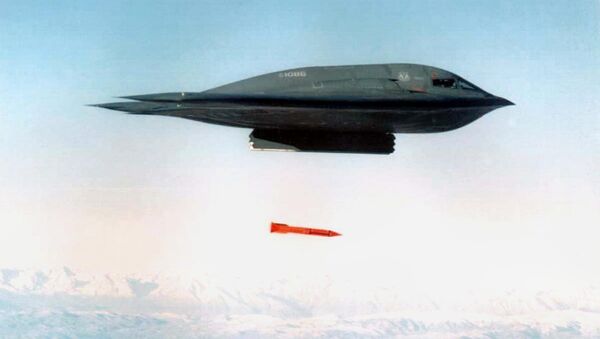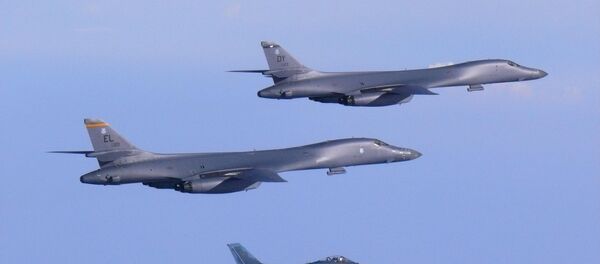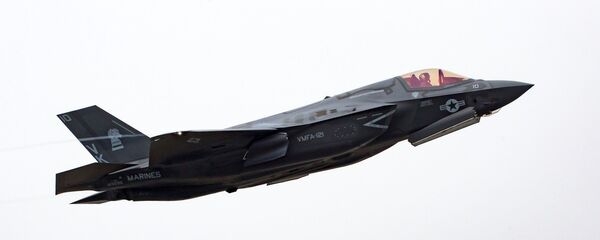“The US has pledged to expand the rotational deployment of its strategic assets near the Korean Peninsula,” Chung Eiu-young, chief of South Korea’s National Security Office, told lawmakers Wednesday, according to Yonhap.
A document has been signed by US personnel stating the US would make good on its promise, the South Korean news agency said.
The "strategic" assets would comprise an aircraft carrier, nuclear Ohio-class submarines, B-2 Spirit stealth bombers, and F-22 Raptors, the US military’s de facto air superiority fighter, reports Chosun, a South Korean newspaper. Each Ohio-class sub carries 20 D-5 Trident ballistic missiles; one Trident can carry up to 12 nuclear warheads.
Each B-2, meanwhile, can pack 16 nukes in its bomb bay in addition to "bunker busters," a signal to North Korea that underground caves cannot be considered secure hiding places.
Harald Malmgren, former aide to US presidents John F. Kennedy, Lyndon B. Johnson, Richard Nixon and Gerald Ford, said Wednesday via Twitter “when [US President Donald] Trump called for one-air drop of MOAB [the Massive Ordnance Air Blast or so-called ‘mother of all bombs’]” the point was to send "a message" to North Korea: "no tunnels or deep underground facilities" are safe.
Two squadrons of US F-35s have already deployed to both South Korea and Japan. And in February, supersonic B-1B Lancer bombers, by treaty not nuclear-capable, arrived at Andersen Air Force Base in Guam. At least a dozen F-22s have been stationed in Japan since 2016.
Bringing some of those chess pieces directly to the Korean Peninsula would signal a more assertive US posture toward Pyongyang.
Over the weekend, a pair of Lancers and accompanying South Korean F-15s flew north of the demilitarized zone along North Korea’s east coast, as the US president used Twitter to condemn the North Korean foreign minister’s speech before the UN and suggest the country’s leadership wasn’t long for this world. Speaking to reporters outside a New York hotel Monday, North Korean Foreign Minister Ri Yong-ho said, "Trump claimed our leadership would not be around much longer … he declared a war on our country."
— Donald J. Trump (@realDonaldTrump) September 24, 2017
The US State Department and White House dismissed reports that the US had declared war against North Korea’s Kim Jong-un.
"Since the United States declared war on our country, we will have every right to take counter-measures, including the right to shoot down US strategic bombers even when they are not yet inside the airspace border of our country," Ri said September 25.
South Korea’s spy agency told Yonhap Tuesday that North Korean warplanes and other defense assets had been mobilized to the nation’s east coast following the B-1Bs’ flyby. The US published the flight group’s path after the flights because North Korea had evidently not recognized they flew past, the Yonhap report said.




